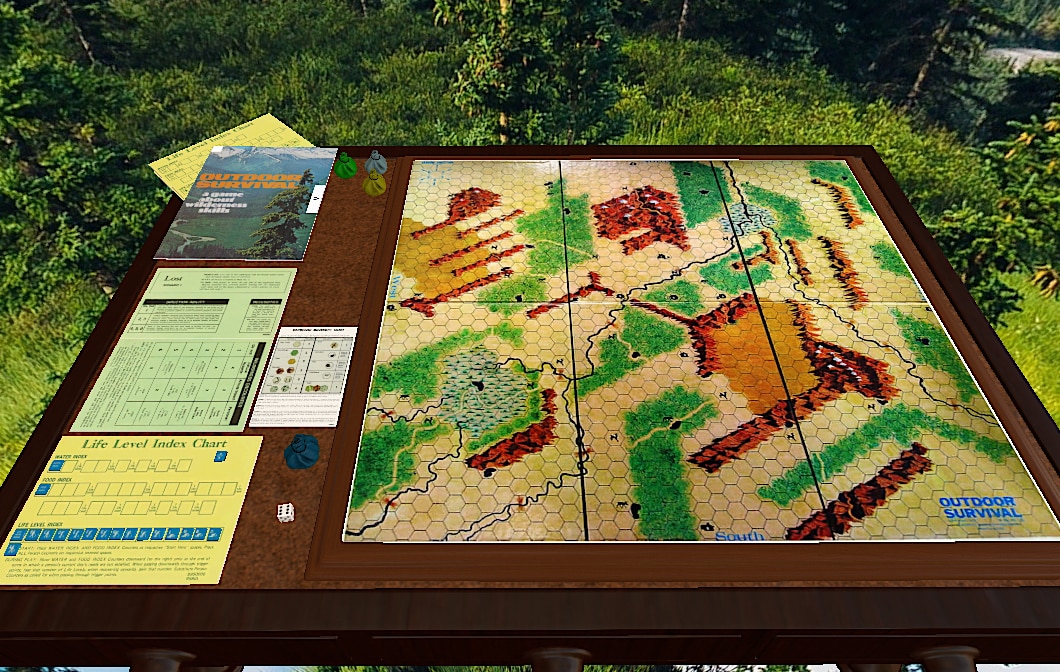

| - | - | - | - | - |
| The Dragon #1 | Best of Dragon Vol. I | OD&D | 1st Edition AD&D | Dragon magazine |
Probably one of the main things that keeps
D&D
judges
from turning their games from a good dungeon
into an exciting
campaign is a lack of a wilderness area.
If Part 1 of this series
helped you enlarge your Game with a town
or city, this article will
enable you to map in the area surrounding,
to build other cities,
baronies, kingdoms, even whole continents
crawling with monsters,
treasure, and advnture. And from
there it is a simple step
to turn your castle game into a full fledged
campaign. (Further information
on campaign games will be given in Part
4 of the series). <There is no part 4>.
Outdoor maps can be done in several ways,
but I will discuss
only the 3 used most often.
1st, there can be just 1 map made which
only the judge
sees; this way any special areas can be
openly marked.
2nd,
again only 1 map can be used, but instead
it is laid out before
the players during each outdoor adventure.
This method does involve
the problem of how to mark the special
sections that the
judge doesn't want his players to know
about. The easiest way to
get around this is to grid off the map,
the list the grid co-ordinatets
of special regions on a separate sheet
of paper. Then
when adventurers move in the wilderness
it will be a simple matter
to check out whether they have stumbled
on something
special.
The 3rd way is probably the most difficult
way, the most interesting
way for the players, and the most fun for
the judge. [It is
also the recommended way. Ed.] It requires
two maps: one
detailed with all the special treasures
and areas marked on it, for
the judge’s use, and one vague map where
only major
geographical features and cities are shown,
and not always where
the judge’s map shows them to be. This
map represents what the
players know from the slight amount of
information they can pick
up in the town they are in.
For the first attempt it is best to stay
small; map out a
barony or dukedom or an area of equal size.
That way the map is
detailed, less ideas are needed for strange
areas, (truthfully, how
many weird things can you find in the average
barony?) and
more time can be spent on setting up a
key for the map. (It is best
to use colored pencils and hexagon paper
on the final draft, but
pencil and regular graph paper is all right
for planning out the
map.)